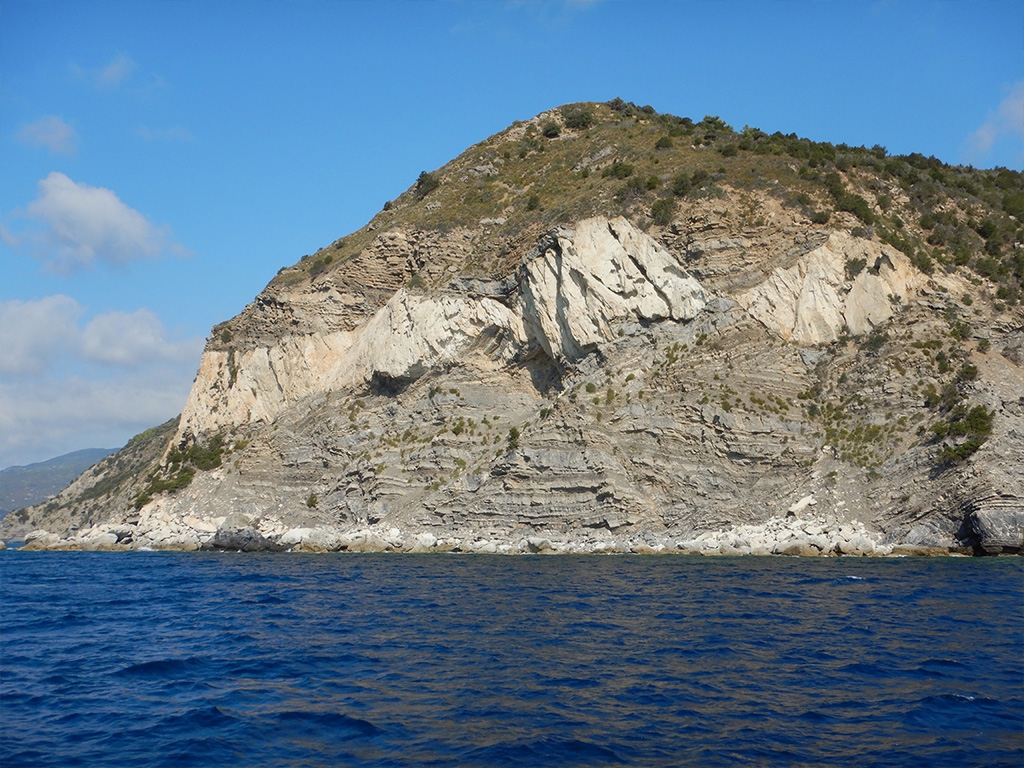
Flysch
On this section of the path, we encounter a geological formation of sedimentary origin known as Cretaceous Flysch, essentially consisting of layers of marly limestone and dark grey marl with deposits of sandstone and conglomerates. The word 'flysch' is of Swiss-German origin and means 'slippery slope' or 'flowing ground', referring to the series of geological structures that formed mainly during the Late Cretaceous period (65-100 Mya) in pelagic zones of the ancient Tethys Sea following large-scale underwater landslides along the continental shelf.
The heavier, coarser sediments, falling and depositing on the oceanic basin, reached the bottom first, forming layers of conglomerates and sandstone, while the finer sediments, such as clay, deposited last, creating what are now layers of marl. These landslide events occurred several times due to significant compressive tectonic movements during that geological period in the Tethys, forming the limestone turbidites, or Cretaceous flysch, found in central-western Elba, from Buraccio to the north and south coast of the island: in the areas from Enfola to Punta della Guardiola, near Procchio, to the north, and from Lacona bay to Campo bay and as far as Galenzana, Capo Poro and in the area we are walking through now, to the south.
These formations include the Ghiaieto sandstone beds, with the most significant outcrops found by the beach on the western side of Lacona bay, where there are also layers of conglomerates. In the above-mentioned areas, layers of sandstone - formed by lithification of ancient sandy deposits accumulated in those deep marine environments - essentially alternate with layers of marl and marly limestone. Marl is a fine-grained sedimentary rock composed of a mix of calcite and clay minerals in roughly equal parts, and may contain traces of quartz, micas and carbon residues. If the proportion of carbon exceeds two thirds of the total composition, we have what is known as marly limestone. The formation is widely affected by extensive intrusions of veins and laccoliths originating from creation of the Capanne magma pluton.
(Antonello Marchese, translation from Italian)

